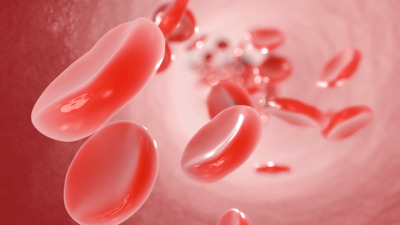It is a basic principle in biology- blood is made in the bone marrow. It’s where the cells( hematopoietic stem cells (HSCs))responsible for generating red blood cells, white blood cells, and platelets reside. But a striking study from researchers at UC San Francisco (UCSF) is rewriting that narrative.
According to new findings published in Blood, the lungs also contain active blood-forming stem cells , capable of producing not only red blood cells but also platelets and key immune cells.
The discovery could have direct implications for stem cell therapies and transplant medicine.
The UCSF research team, backed by the National Heart, Lung, and Blood Institute (NHLBI) of the National Institutes of Health (NIH), first made this groundbreaking discovery in 2017when they found that mouse lungs were generating up to half of the animal’s platelets, a surprising contribution for an organ never thought to be involved in hematopoiesis.

These cells, structurally and functionally similar to bone marrow HSCs, weren’t merely circulating through the lungs, but seemed to be living in there.
To test how capable these cells actually were, scientists isolated HSCs from both lung and bone marrow tissue, grew them in laboratory conditions, and observed what they produced.
“Both types of HSCs thrived in our gold-standard stem cell experiment, but the lung HSC colonies made more red blood cells and megakaryocytes, while the bone marrow colonies tended to make more immune cells,” explained Mark Looney, MD, professor of medicine and laboratory medicine at UCSF and senior author of the study.
Rethinking the bone marrow transplant
Bone marrow transplants have long been used to treat cancers like leukemia and other blood-related conditions. They involve harvesting stem cells from a donor, often via a blood draw, and using them to rebuild a patient’s blood system.

But the UCSF team found that nearly 1 in 5 stem cells isolated in bone marrow transplants actually carried markers specific to lung-derived HSCs, suggesting that current stem cell harvests may be drawing from more than just the bone marrow.
“For decades, bone marrow transplants have been a lynchpin in the treatment of cancers like leukemia,” Looney said. “The lung HSCs could prove to be a second and significant reservoir of these precious stem cells.”
The team also demonstrated that human lung HSCs could restore bone marrow function in mice, a powerful indication that these cells aren’t just present, they are fully operational.
Why would lungs make blood?
That question remains unanswered, but there are theories. “The lungs are critical to blood circulation, so it’s tantalizing to see the lung HSCs as an emergency reservoir for red blood cell and platelet production,” said Looney.
One possibility is that these cells activate during times of stress or injury, when the body’s demand for oxygen-carrying red cells or clot-forming platelets spikes. The lungs, always at the center of the oxygen exchange process, could provide a rapid-response supply.
According to new findings published in Blood, the lungs also contain active blood-forming stem cells , capable of producing not only red blood cells but also platelets and key immune cells.
The discovery could have direct implications for stem cell therapies and transplant medicine.
The UCSF research team, backed by the National Heart, Lung, and Blood Institute (NHLBI) of the National Institutes of Health (NIH), first made this groundbreaking discovery in 2017when they found that mouse lungs were generating up to half of the animal’s platelets, a surprising contribution for an organ never thought to be involved in hematopoiesis.
These cells, structurally and functionally similar to bone marrow HSCs, weren’t merely circulating through the lungs, but seemed to be living in there.
To test how capable these cells actually were, scientists isolated HSCs from both lung and bone marrow tissue, grew them in laboratory conditions, and observed what they produced.
“Both types of HSCs thrived in our gold-standard stem cell experiment, but the lung HSC colonies made more red blood cells and megakaryocytes, while the bone marrow colonies tended to make more immune cells,” explained Mark Looney, MD, professor of medicine and laboratory medicine at UCSF and senior author of the study.
Rethinking the bone marrow transplant
Bone marrow transplants have long been used to treat cancers like leukemia and other blood-related conditions. They involve harvesting stem cells from a donor, often via a blood draw, and using them to rebuild a patient’s blood system.

But the UCSF team found that nearly 1 in 5 stem cells isolated in bone marrow transplants actually carried markers specific to lung-derived HSCs, suggesting that current stem cell harvests may be drawing from more than just the bone marrow.
“For decades, bone marrow transplants have been a lynchpin in the treatment of cancers like leukemia,” Looney said. “The lung HSCs could prove to be a second and significant reservoir of these precious stem cells.”
The team also demonstrated that human lung HSCs could restore bone marrow function in mice, a powerful indication that these cells aren’t just present, they are fully operational.
Why would lungs make blood?
That question remains unanswered, but there are theories. “The lungs are critical to blood circulation, so it’s tantalizing to see the lung HSCs as an emergency reservoir for red blood cell and platelet production,” said Looney.
One possibility is that these cells activate during times of stress or injury, when the body’s demand for oxygen-carrying red cells or clot-forming platelets spikes. The lungs, always at the center of the oxygen exchange process, could provide a rapid-response supply.
You may also like

Delhi's Fuel Ban: A Bold Step with Real World Consequences

From class struggle to Samajik Samrasta: How BMS redefined India's trade union politics

Explained: How Tulsi Gabbard's House Intelligence Committee report challenges Obama officials' Russia narrative - and gives Trump new ammunition

Adding just 2 ingredients to an orange creates 'ultimate summer dessert'

Renault Triber Facelift 2025 Launched with New Features and Stylish Look — Check Price and Specifications






